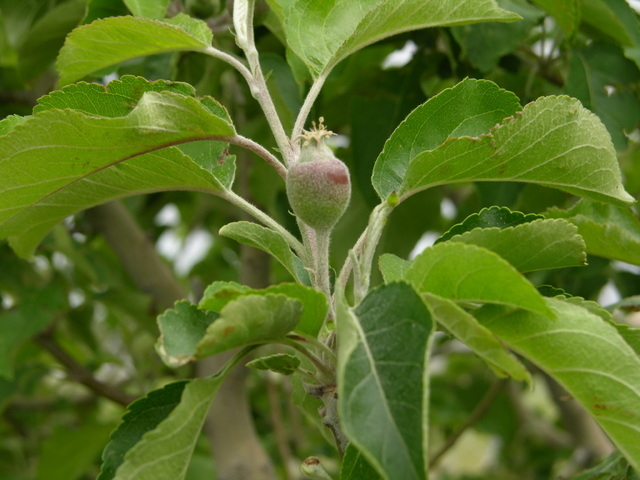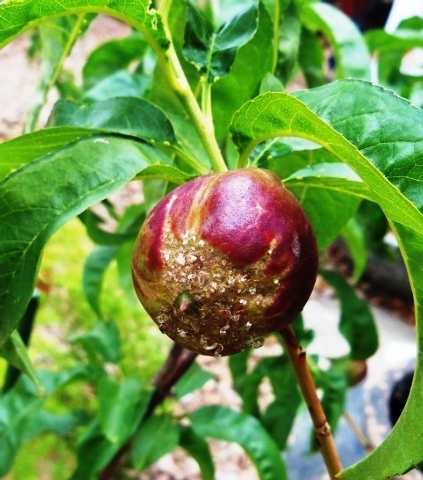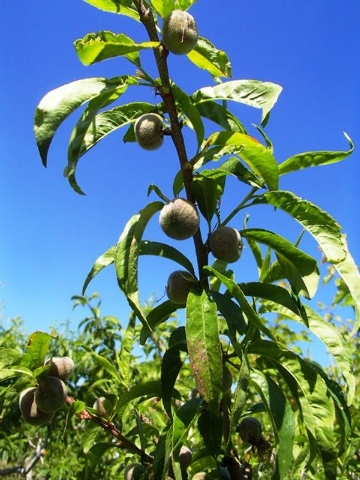Fruits, vegetables need special care in spring
The following are some very important activities you should be doing now if you are growing fruit and vegetables in your home gardens. Be sure to thin fruit for better quality and get an early jump on pests that are active now.
Most fruits are far enough along to thin for increased size. Thinning, or the removal of some of fruit while leaving others, allows the remaining fruit to get larger. Remove peaches and nectarines so that there is about 4 inches between the fruit. If you have a choice, leave the fruit on the bottoms of branches.
Apples and pears are born in clusters. Leave only one fruit per cluster, the largest one, and remove the others. It can be easier to cut the fruit off rather than pull them so you don’t break the short fruit-bearing branches or spurs. If you don’t have a heavy crop of apples, you can leave two per cluster. Thin apples and pears two to three times during the coming two to three weeks.
Apricots and nut trees are not usually thinned unless apricots are in really tight clusters. Tight clusters of fruit might force neighboring fruit to fall off as they grow bigger. If this is the case, go ahead and remove every other apricot.
Plums and pluots need to be thinned. With plums run your hands over each of the branches and thin the fruit lightly with your fingers. You can also use a stick and tap the branches a few times until only enough fruit remains.
If you had problems in the past with insects on your grapes, now is the time to spray. You can use Bt or Spinosad sprays with Spinosad preferred if you had leafhoppers in the past. Bt at the store might also be called Dipel or Thuricide.
Leaf-footed plant bugs are out and laying eggs. You should get a spray on pomegranates, pistachios, citrus and almonds if insects have been a problem in the past. Garden sprays that contain pyrethrin or synthetic pyrethrins are usually a good option. Do not spray plants in bloom and spray at sunrise or sunset when bees are no longer working.
Look for squash bugs on the bottom leaves of squash, melons and cucumbers. Pick them off by hand or use a portable vacuum to remove them. Trim the bottom leaves of these plants to give you better access and reduce hiding places.
n Grapes. I received an email from a reader who reported leafhoppers already on grape leaves two weeks ago. Another person reported sphinx moths flying now. This moth lays eggs that become hornworms. Another person reported skeletonizer moths (black or metallic dark blue) flying around the grapes.
These are all pests that become problems in grapes. Spinosad is the perfect spray for all of these insects. Spray grapes now and repeat the spray in about 10 to 14 days. Bt will control all of the same pests on grapes except for leafhoppers.
Include a wetting agent or surfactant in the spray mix. There are several name brands out there in a liquid form. Spray on the undersides of the leaves with the spray directed upward. Repeat this spray covering the tops of the leaves. Spray only long enough to moisten the leaf surface. Two applications about two weeks apart should be enough.
Although these are “organic” sprays, protect your hands, arms and face when spraying. Do not spray if there is any wind, and spray when the bees have gone home, sunrise or sunset.
If you had leafhoppers on grapes last year you can expect them this year. These are tiny little bugs that hop off of the grape leaves when you walk by them. Some people’s feel that they “swarm” or fly off the leaves. Like all bugs, you must look on the undersides of leaves to find them.
If they are not controlled early, pest numbers will build over the season as they multiply. Once the adults get established they are difficult to control without using some harsh conventional pesticides.
To increase the size of the individual berries in table grape clusters, pinch off the bottom one third of the cluster. Fewer berries in each of the clusters mean that the remaining berries will get larger.
n Leaf-footed plant bug. This insect can be a bad pest on just about everything including the vegetable garden. I get more complaints about this insect than any other pest.
Adult leaf-footed plant bugs survive the winter feeding on evergreen plants in our landscapes. They begin laying eggs as soon as new growth appears on fruit trees or the vegetable garden has been planted. They cause pomegranate fruit to drop, pistachio nuts to drop or develop no nut on the inside, almonds to drop from the tree before they are ready and cause similar damage to vegetables.
It is important to control this pest early in the season. To find this pest on fruit trees you must look at the bottom or undersides of the leaves. They will move away from you if they see you unless they are protecting their young.
Sprays of insecticidal soaps will kill them if the insect is sprayed directly. Insecticidal soaps must be sprayed frequently.
Sprays containing pyrethrin or synthetic pyrethrin (sometimes called pyrethroids) work better and leave a toxic residual on the leaves after they have been sprayed. The conventional insecticide Sevin is used commercially.
Always use a wetting agent added to the spray mixture when mixing sprays to control insects. Wear clothing that protects your face, arms and hands and never spray during windy weather. Remember to spray up so the undersides of leaves are covered.
n Peaches and nectarines. If you have not thinned your peaches and nectarines then get it done now. Fruit should be removed when it is about the size of your thumbnail so the remaining fruit will get larger. If you do not thin or remove fruit you will have fruit that is small and run the risk of breaking limbs from the weight of the fruit.
Nectarines will become scarred because damage from Western flower thrips. A good organic spray to control them is Spinosad, combined with a wetting agent, and direct the spray toward the fruit to cover it. Spray several times in weekly intervals to keep the fruit free from scarring.
Pick peaches and nectarines when they have turned color but are still firm. Do not let them soften on the tree or they will have bird damage. Monitor the fruit and pick at the first sign of bird damage.
Peaches and nectarines will ripen at room temperature in about two or three days after they have been picked.
n Apples and pears. Apple and pear fruit are in clusters at the ends of very short branches called spurs. There are some apples that produce fruit along longer branches. When these fruit are small, remove all in a cluster except for the largest. Monitor the tree for fruit two or three times over the next three to four weeks.
n Vegetables. Remove the bottom leaves of plants that are closest to the soil surface. This is where a lot of insects have their town-hall meetings. Squash bugs are out and on the undersides of squash leaves, melons and cucumbers.
Keep more than one organic insecticide on hand for vegetables. Use a combination of sprays in a weekly rotation as insect problems develop. Some examples of organic sprays to have on hand include insecticidal soap, neem oil, Bt, Spinosad, and pyrethrin.
Bob Morris is a horticulture expert living in Las Vegas and professor emeritus for the University of Nevada. Visit his blog at xtremehorticulture.blogspot.com. Send questions to Extremehort@aol.com.




















